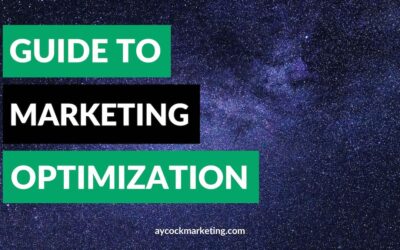Step 1: Choose Your Network or Channel
Choosing the right social media networks is the first step towards creating your social media marketing plan. The most popular social media networks at the time of typing this are Facebook, Instagram, Snapchat, Pinterest, Twitter, and Musical.ly. There are thousands of other outlets to choose from, but these have the largest audiences on them and are the most developed companies. Using these companies will ensure you can get started with a solid audience. Know the difference. Facebook is a great place to start. However, if you’re in the fitness industry or photography business, Instagram or Snapchat may be a good place to start. If you’re in the clothing business, Pinterest is #1. Twitter is dying in our opinions, but it’s still a great place to have conversations publicly. And if you are a personality or a musician, Musical.ly is perfect for you to get started. Don’t start an account on every platform because you think you have to be everywhere. Be where the people are that will most easily become your fans first. Later, you can begin to open a new account on another social media channel. You may want to create an account to claim rights to the brand names on the social media accounts, but just don’t build them out and don’t use them until you’re actually ready.
Step 2: Fill out your profile completely
We constantly see profiles filled out half-way. When someone orders a sub from your shop, do you only put mayo and mustard on it and then hand them the saucy bread? No, you figure out what it is – every single thing they want on it, and when it is a ‘complete’ sandwich, it will be ready for their consumption. Your social media pages are just like this. Make sure your bio section is filled out, your links to your website are there and work, make sure all additional information fields that apply to your business are complete. If they aren’t, it looks sloppy and can look like you do a half-ass job at things. It’s a big turn off to most people, plus they can’t find the info they’re looking for – like your hours of operations. Trust us!
Step 3: Find & Develop Your Voice
Figure out who you plan to talk to in your posts and how you want to talk to them. Position them as the hero to their own story. Your business should be only positioned as the guide that helps the hero overcome their problems. What do they struggle with physically, emotionally? Where is the happy place they hope to be? The place where your business will take them. Take some real hard time to figure out your messaging. We recommend checking out the book Building a Story Brand by Donald Miller for help on this. If you don’t like to read, we can walk you through it.
Step 4: Pick Your Posting Strategy
Picking your posting strategy is as important as the rest. Most people ask questions like “when should I post?”, “what should I post?”, and “how often should I post?”. If everything were as easy as we wanted it to be, we’d have exact answers for each of these questions. But understanding that every business has a different goal, a different audience, and a different style, you really can’t just follow one cookie cutter way. Answering “when should I post” could come from looking at the Analytics that Facebook, Instagram, Snapchat, etc. offers you to get an idea of when your users are online. Experiment to see what times of day and what days people interact with your posts the most. Answering “what should I post” has to do with being self-aware and knowing what you’re best at and what you think your followers will like best. You most often find these things out by trial and error AND by thinking about your strengths and weaknesses. While we recommend posting once per day, we realize it’s not easy to keep that consistency flowing and while others may suggest you should post 2-4 times per day. If you have the ability, the time, and the amount of content to post 2-4 times per day, go for it! It will not hurt you. We find that no matter how often you’re able to, try hardest to be consistent. One here and one there on no particular schedule will yield less-than-adequate results.
Step 5: Analyze & Test to Achieve the Goals You Set
The best way to test and manage your progress figure out where you are. How much engagement are you getting and how many people are you reaching with your posts? Many social networks give you this information if you look in the right spots. Once you have written out what you’re averaging, you can set a goal. A good goal is something that has a greater purpose, something measurable and something you set a timeframe on. Give yourself a deadline. If you average 3 engagements per post you make over a 3-month span, set a goal to average 6 engagements per post over the next 3-month span. When setting a goal like this example, you’ll also need to write out how you plan on obtaining that goal. What extra steps or different steps do you plan to do to achieve that goal. A way to reach a social media goal is to try different types of posts and posting at different times of the day.
Step 6: Automation & Engagement
The final steps to creating your Social Media Marketing Strategy is finding a way to automate and engage with your audience. Here are a few ways to automate: Try using Post Schedulers such as Buffer or HootSuite (both have free and paid versions). They work great and can save you a lot of time. If you’re using Facebook, they offer Post Scheduling while you’re setting up your posts. There are theories that Facebook favors posts that are scheduled on their platform over ones scheduled and posted via third-party websites like Buffer and HootSuite but we’re not sure of anyone proving this. We recommend streamlining what you can by choosing one day each week to schedule out posts for the next week ahead of you. This way, you can carry on about your business while your posts are being published automatically. If this seems too time-consuming, you could delegate the task out to employees you trust or hire a local digital marketing company like Aycock Marketing. The last step is engaging with your audience. Make a plan (a set of rules) for how you intend on responding the customer inquiries, post comments, negative reviews, positive reviews, concerns, messages, partnership requests, sponsorships, etc. Who is going to answer what types of messages? How do you plan on replying in a timely manner? These are all important things to think over and set up so your customers are taken care of properly.
Your New Social Media Marketing Strategy
We hope these tips were helpful to you and that you can use them to build a social media marketing strategy for your business. If you don’t create a strategy, then you won’t make much progress and waste a lot of time. If you’re smart about making a strategy, your social media channels will start to bring in more customers and revenue. Seem like a lot? Shoot us a message. Tap the button below to schedule a call and we can discuss this blog post further.




